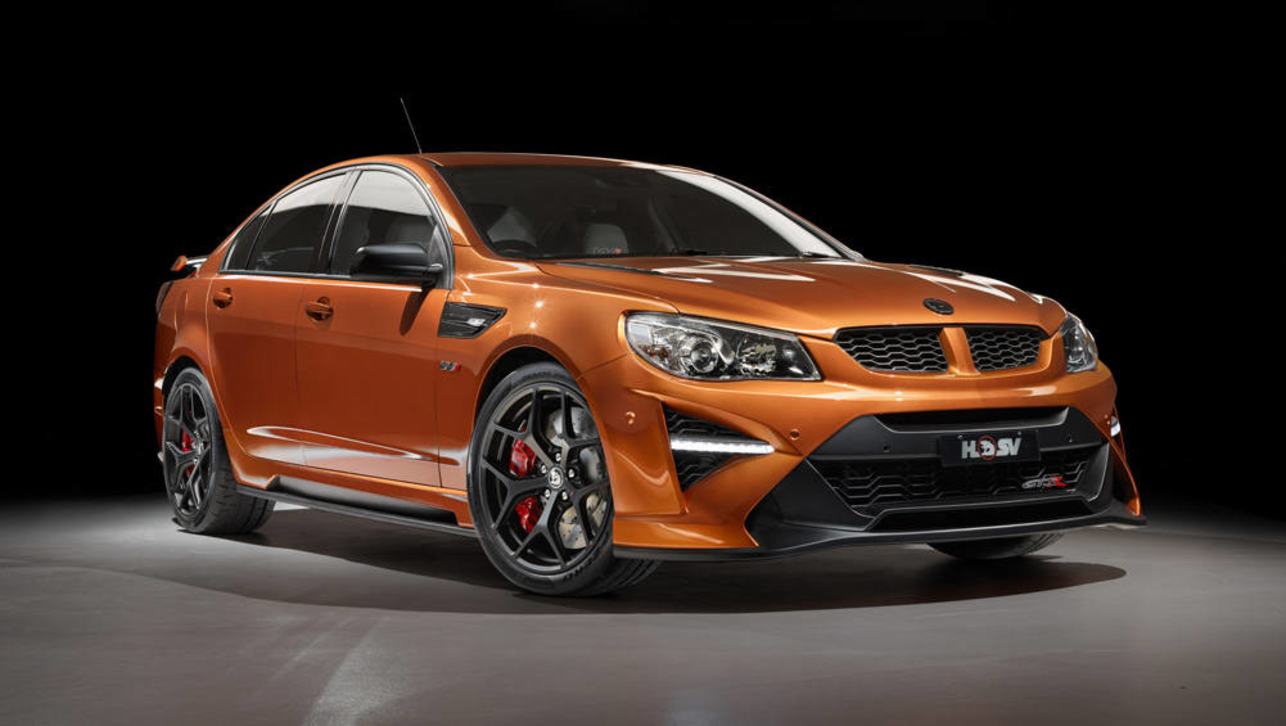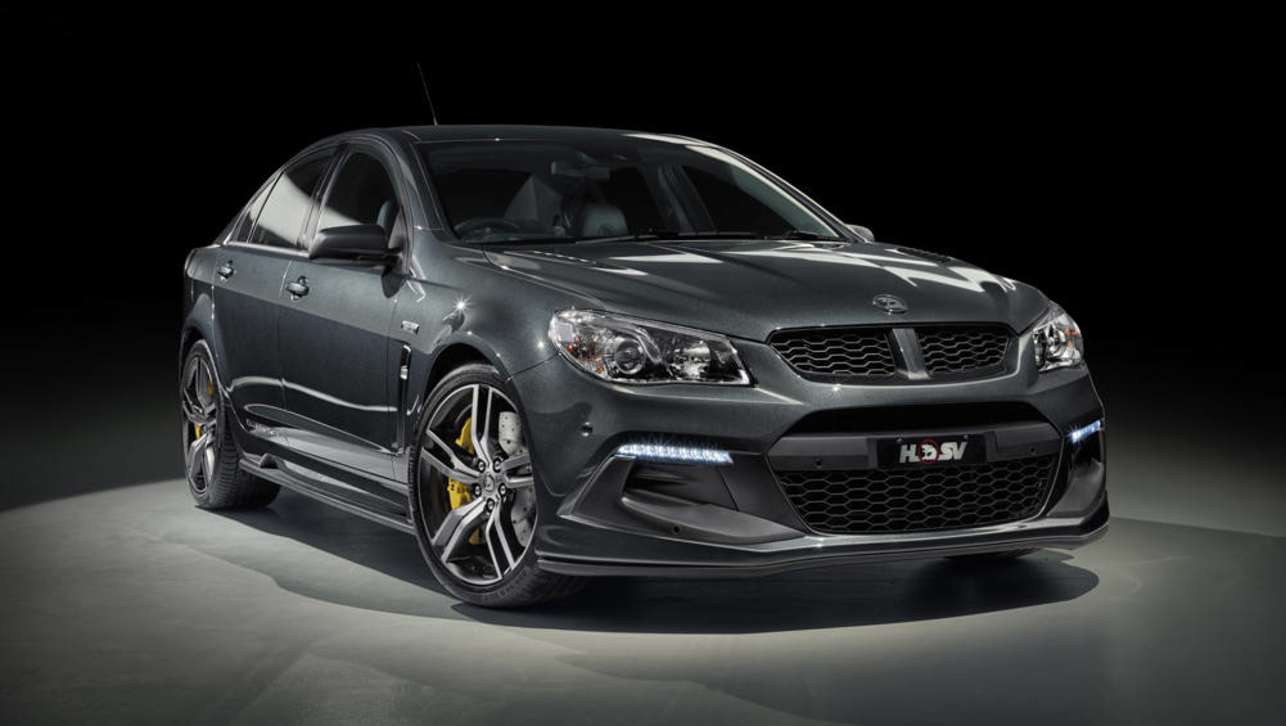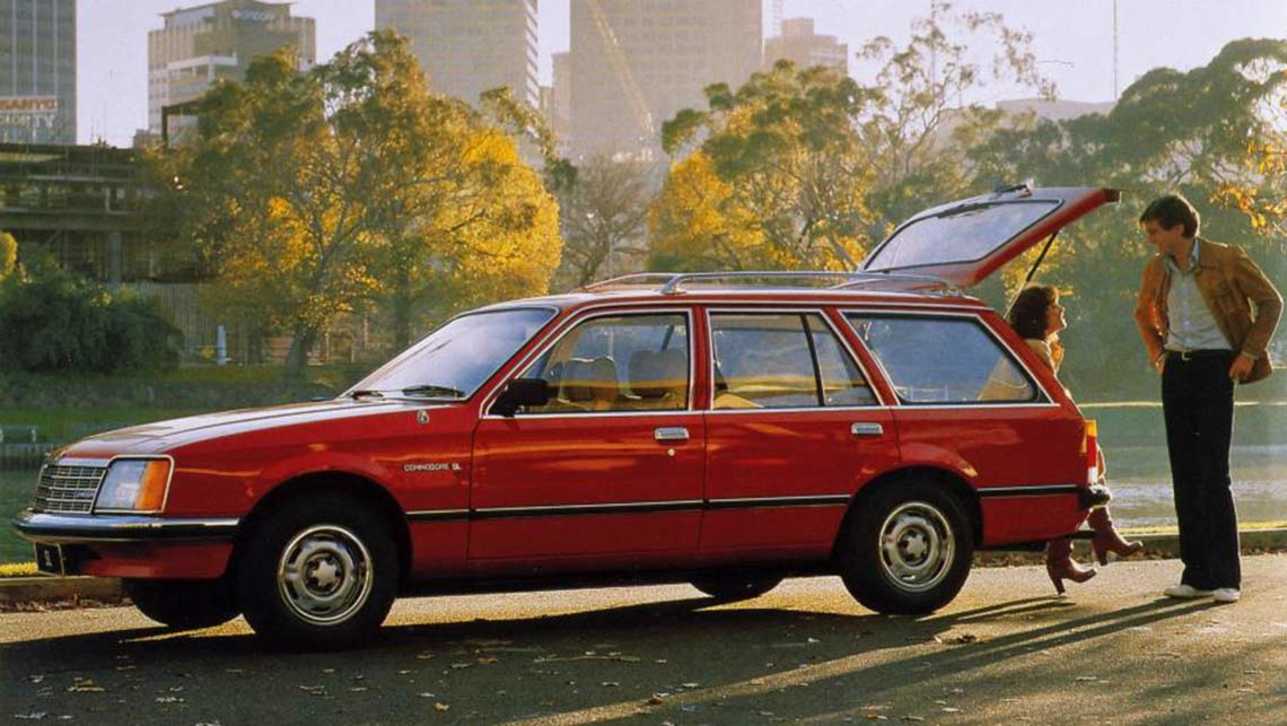Holden Special Vehicles (HSV) is farewelling its Australian-built Commodore-based models with a ballistic 474kW limited model that will be the most expensive production car ever produced in Australia.
As well as a range of updated 30 Years editions for the last year of production ahead of the British-owned company switching to tweaking imported cars, the brutal GTSR W1 will be limited to just 300 examples, produced from April this year, ensuring it will become a collector’s item.
Pricing for the Aussie-built rocket kicks off at $169,990 plus on-road costs, making it more expensive than the previous top-range HSV – the $155,000 7.0-litre W427 from 2008.
The engine – a supercharged 6.2-litre LS9 V8 that pumps out 474kW/815Nm – was sourced from a stockpile left from the sixth-generation Chevrolet Corvette that was replaced in 2014.
According to HSV, the W1 – which is only offered with a close-ratio six-speed manual gearbox from the Corvette – can sprint from 0-100km/h in 4.2 seconds, which is 0.3s quicker than the standard 430kW GTS.
Development of the GTSR W1 and the slightly less bonkers GTSR cost HSV about $9 million
While the top speed is electronically limited to 250km/h, it is believed the hi-po sedan could reach 293km/h at 6600rpm in sixth gear.
GM assisted with the engine that features lightweight forged aluminium pistons, forged titanium conrods, titanium inlet valves, hollow-stem exhaust valves, a 2.3-litre supercharger, dry sump and carbon-fibre air box.
To ensure proper fitment, engineers tilted the radiator backwards, designed a new oil tank for the dry sump return, and re-engineered the exhaust system.
In fitting the six-speed manual gearbox, local HSV engineers took the rear-mounted transaxle unit and modified it for the Zeta platform’s back-of-engine layout, complete with a Zachs twin-plate clutch.
Both the GTSR and GTSR W1 feature bespoke front mudguards made of plastic, as well as a new wheelarch flare design to house the 20-inch wheels that are nine inches wide at the front and 10 inches wide at the rear.
The GTSR – which is offered in sedan and Maloo ute guise – and the W1 have massive brake rotors measuring 410mm at the front and six-piston monobloc AP Racing calipers.
Development of the GTSR W1 and the slightly less bonkers GTSR cost HSV about $9 million which would usually stretch over three to four years of development, but in the case of the performance twins, it was a matter of months.
The GTSR W1 gains carbon-fibre on the side vents, front splitter and rear spoiler. The standard GTSR has gloss black trim.
Inside, the pair feature new diamond-stitched Alcantara sports seats, while the steering wheel and gear knob in the W1 feature the same material.
The W1 features SupaShock coil-over springs and dampers in place of the Magnetic Ride Control semi-active suspension of the GTSR.
The rest of HSV’s Gen F2 line-up has also been overhauled for its final hoorah, with the addition of a throatier bi-model exhaust – which is also offered on the GTSR and GTSR W1 – and some visual tweaks among the changes.
The 30 Years range includes the ClubSport R8, ClubSport R8 Tourer, Maloo R8, Senator Signature and GTS, with pricing kicking off from $79,990 plus on-roads for the Maloo, before topping out at $98,990 for the GTS.
While the GTS retains its 430kW output from the LSA V8 engine, the other models gain an extra 10kW of power and 20Nm of torque to bring it up to 410kW/691Nm.
Brake torque vectoring is also now offered on ClubSport, Maloo and Senator Signature after previously only being available on the GTS.
The ClubSport variants and the GTS feature matte black accents on the alloy wheels and the Senator Signature gets 20-inch Rapier forged alloys that were previously only offered as an option.
The 30 Years logo will appear on floor mats, exterior badges, door sills and each version will have a 30 Year engine build plate.





.jpg)
.jpg)



.jpg)
.jpg)












.jpg)


.jpg)


.jpg)


.jpg)

.jpg)
.jpg)




Comments